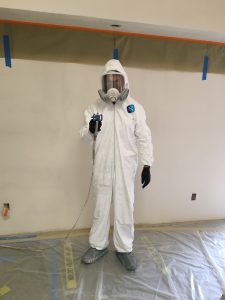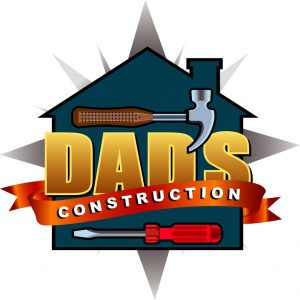What Is the Best Paint and How Do I Choose the Right Painter?
Is $675 a fair cost? That’s a question a client recently asked me about an estimate she received from an insurance restoration company to paint. I started to think about this question and found myself sympathizing with her dilemma. In so many areas of construction today, folks really have no idea what there’re paying for or buying. People want the cheapest price, the highest quality, and quick turnaround. Unfortunately, the three together are a thrice oxymoron. As with anything, it’s all about decision making and what’s important to you. You only have 3 choices when it comes to quality; these are Good, Fast, and Cheap. You need to keep these in mind (as we’ll see below) when asking “What Is the Best Paint and How Do I Choose the Right Painter?”
Below are images of the Project Management Triangle (PMT). The PMT or “Iron Triangle” is a highly recognized and well used project management tool to quickly illustrate the outcome of your decisions.
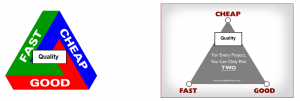
The Project Management Triangle (PMT) gives 3 options
The PMT gives the options of Fast, Good and Cheap; you can pick any two. Here, Fast refers to the time required to deliver the product, Good is the quality of the final product, and Cheap refers to the total cost of designing and building the product. This triangle reflects the fact that the three properties of a project are interrelated, and it is not possible to optimize all three – one will always suffer. In other words, you have three options:
- Fast and Good: Design and build something quickly and to a high standard, but then it will not be cheap. Why? Because quality and durability require better people and materials. Over time, this always proves to be the lowest, total overall cost.
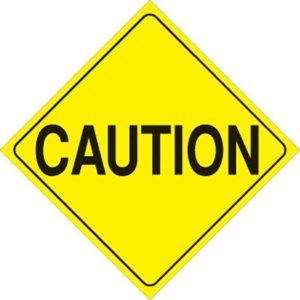 A word of caution regarding “quickly”. Quickly is a highly relevant term. Quickly does not mean overnight completion. It means that if the project is properly planned and carefully executed, it will progress along its normal course and be a success.
A word of caution regarding “quickly”. Quickly is a highly relevant term. Quickly does not mean overnight completion. It means that if the project is properly planned and carefully executed, it will progress along its normal course and be a success.
- Fast and Cheap: Design and build something quickly and cheaply, but it will not be of high quality. Why? Because quick and cheap is a house of playing cards. In other words, success requires proper, well thought out planning, careful execution, using high quality materials and people. Anything else and it will fail.
- Cheap and Good: Design and build something with high quality and cheaply, but it will take a very, very, long time. Why? Because the technology has yet to be developed to get the cost down.
About that paint price of $675. Here is what you’re not being told and what you don’t know enough about painting to ask:
- Is the Painter properly licensed by the Contractors State License Board (CSLB), have Workers Compensation Insurance (if required), General Liability Insurance, and is Bonded?
- What brand of paint are they using? Are you sure that what’s in the can reflects what the label says?
- What application process are they using?
Let’s examine each of these separately. When asking “What Is the Best Paint and How Do I Choose the Right Painter?”, these are very important questions to ask.
 Licensing and Insurance
Licensing and Insurance
Log on to www.CSLB.CA.Gov to check if the Painter is licensed, the license is valid and in good standing, they are bonded, and they carry Workers Compensation Insurance. The site won’t tell you if they have General Liability Insurance – this is equivalent of car and home insurance. If the Painter destroys or damages your home, this is what pays to cover the damage. No General Liability Insurance and you’re on your own when he burns your house down because he did not properly secure the paint and its fumes ignited from your water heater pilot light.
By law, you must be told by the Painter/Contractor if they have General Liability Insurance. It’s not required by law (why in the world would you hire anyone who does not have General Liability Insurance?). If they do have General Liability Insurance, you must be provided with the name of the provider, policy number, and the insurance contact information when you hire the Painter/Contractor (this is when you sign the contract).
Workers Compensation Insurance
Workers Compensation Insurance – BE CAREFUL! If the CSLB web site says that the Contractor is exempt from Workers Compensation Insurance, this means they are personally going to perform all the work by themselves. They have no employees (There are some exclusions. Ask your contractor.). Guess what? In California, this makes you responsible for all injuries and legal expenses for anyone that Painter/Contractor brings on your property to work if they do not have Workers Compensation Insurance. If they are injured or killed, you’re responsible. Your typical homeowners’ insurance won’t cover this either. I have personally met Customers who were more than $50,000 (and growing) in debt because they hired someone who lied about carrying Workers Compensation insurance (there are some exclusions and exceptions to the Workers Compensation requirement – ask your contractor).
What Brand of Paint are They Using?
Behr, Dunn Edwards, Vista, Valspar, Sherwin Williams, Benjamin Moore, etc. Which is best for YOUR community? Just because one brand of paint works good in New York does not mean it works well in California – so forget the internet for researching what people have to say. What works in California beach communities (such as Newport Beach) is vastly different from what works in inland California communities (such as Mission Viejo)!
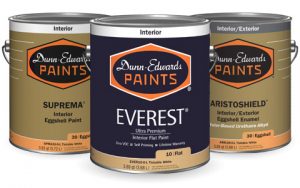 In my 45 years of Southern California building and remodeling, I find Dunn Edwards (D&E) is the best paint. Great, so the Painter/Contractor is using D&E paint. OK, which one? Like all manufactures, they have low-end and high-end products (go back to the triangle). The cheapest interior paint D&E makes is Acriwall at about $15 per gallon.
In my 45 years of Southern California building and remodeling, I find Dunn Edwards (D&E) is the best paint. Great, so the Painter/Contractor is using D&E paint. OK, which one? Like all manufactures, they have low-end and high-end products (go back to the triangle). The cheapest interior paint D&E makes is Acriwall at about $15 per gallon.
The best interior D&E paints are Suprema and Everest at about $35 and $36 per gallon. The best D&E exterior paint is Evershield at about $40 per gallon (The cheapest are Versaflat and Acri-Build at about $20 per gallon). If your job requires 15 gallons of paint inside, with tax and the government mandated fees, that’s almost a $325 difference. However, the difference in quality, strength, washing, durability, and color retention is HUGE. With Acriwall (a production or new tract home paint – really cheap watercolor stuff), you won’t even get one wall washing out of it. You’ll be lucky to get a year or two before you’ll need to paint again.
Correctly preparing the surface and using Suprema, Everest, or Evershield paints and with proper care, 10 to 15+ years easy before your next paint job. Now that $325 difference quickly balloons to a savings of $4,225 or more – and that’s just the cost of the paint, with labor this could easily balloon to well over $10,000! Again, see the triangle above.
What Paint is Really in the Can?
What’s in the can? Sure, the Painter tells you they’re using Suprema. Make sure your contract specifically spells out the make and type of paint – not “Dunn Edwards paint” or “paint”. It should read, for example, “Dunn Edwards Suprema SPMA40 eggshell sheen in the color of DEW 311, French White”. I have seen more often than you can imagine a much lower quality of paint inside a Dunn Edwards Suprema can vs. what the label says. How can this be? Simple, to get the price down, the Painter fills empty Suprema paint cans with (a) cheaper paint and/or (b) cuts the Suprema paint using water and/or cheaper paint. You don’t get something for nothing. Let’s face it, nobody works for free or looses money on a job. When the paint arrives, look for the label on the paint can:
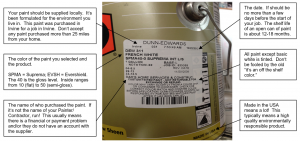
Primer – Without a high quality primer, your paint will never last.
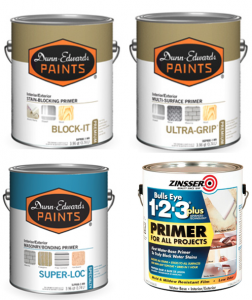 All new baseboards, door case, doors, drywall (even repairs and patches), and any bare wood must be primed. Forget all the hype of paint+primer in one. It’s a bunch of baloney. First prepare the surface (sanding, hole filling, etc), prime (2 coats minimum), and paint (2 coats minimum).
All new baseboards, door case, doors, drywall (even repairs and patches), and any bare wood must be primed. Forget all the hype of paint+primer in one. It’s a bunch of baloney. First prepare the surface (sanding, hole filling, etc), prime (2 coats minimum), and paint (2 coats minimum).
There is no one size fits all primer. Specific primers are made for specific applications. I can tell you that the best primers are those manufactured by Zinsser and D&E. It’s not cheap, but it’s good stuff! Like anything, it’s the strength of the foundation that matters – painting is no exception. The best built house will fail if built on a substandard foundation (see the triangle). Zinsser’s Bulls Eye 1▪2▪3 and D&E primers are the best primers for most painting applications.
Applying the Paint (Application)
This is a tough one. Unless you’re an experienced and highly qualified licensed Painter/Contractor, you’re not going to be able to figure this one out. Anyone can paint. Not everyone knows HOW to paint. You can watch all the YouTube videos and attend all the Home Depot clinics in the world, this still will not provide you with even 10% of the experience you need to paint correctly. To paint properly, it’s much more difficult and expensive than it looks. All the ding-dongs out there have conned you into believing one painter is as good as the other . . . telling you its price that matters (see the triangle). Painting incorrectly will not only guarantee damage to your home (which you likely not see the extent of for years) but look and perform marginal at best.
General Painting Tips
Insist on 2 coats of paint. With few exceptions, every Painter will cheerfully tell you with a smile that he always applies 2 coats! What he means by 2 coats is that he passes over the same wet area of paint twice. That’s 1 coat! To get 2 coats, the first coat of paint (or primer) needs to dry 4-6 hours minimum. Then, a second coat is applied. Ask the Painter how they are going to apply 2 coats of paint to your living room walls and finish the job in 1 day when the first coat needs to dry for 6 hours? See the triangle.
Let’s assume your Painter is painting the gypsum (drywall) surfaces in your living room. What is he using for a roller cover? The picture to the right illustrates 3 types top to bottom (a) a traditional 9” high quality roller cover from Dunn Edwards (b) fabric mini or “weenie” roller (c) foam mini or “weenie” roller.
 A bag of 3 or 6 budget roller covers from Home Depot are trash. These will leave fuzz and an imbalance of paint on your walls. Insist on a new (not used) paint roller cover from a professional paint supplier (like Dunn Edwards). I’ve used almost every roller on the local market. I can tell you the Dunn Edwards Pro White roller cover is by far the best. It does a very nice job (yes, it costs more) and you can see and feel the difference.
A bag of 3 or 6 budget roller covers from Home Depot are trash. These will leave fuzz and an imbalance of paint on your walls. Insist on a new (not used) paint roller cover from a professional paint supplier (like Dunn Edwards). I’ve used almost every roller on the local market. I can tell you the Dunn Edwards Pro White roller cover is by far the best. It does a very nice job (yes, it costs more) and you can see and feel the difference.- Those mini or “weenie” rollers are designed for getting into tight places. They are not for painting entire walls. Unfortunately, (again, to get the price down), I’ve seen lots of Painters use these to paint entire walls (they apply a lot less paint).
 Spray painting
Spray painting
The items noted in the following must be spray painted. Why? Simple, the reformulated paints in California start to dry almost immediately after application. Using a brush and/or roller on any of the items noted within this paragraph will look absolutely awful – and I mean bad! Inside the house: finished woodwork is the only thing that should be spray painted. This includes cabinets, wall units, entertainment units, organizers, doors, door and window case, crown moulding, chair rail, trim boards, handrails, balusters, newel posts, closet shelving and clothing rods, metals, and baseboards.
Outside the house: Wood, fiberglass, metal, vinyl, and composite entry doors, screen doors, windows, screens, garage rollup doors, shutters, and metal railings. Rain gutter systems can be painted with a brush.
Masking and Property Protection when Painting
Your Painter should take great care to ensure everything is reasonably protected. If I could put into the bank how many times, I find over-spray and 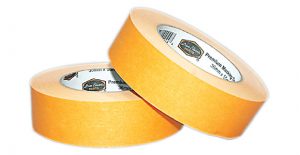 paint roller spray on windows, lights, carpet, tile, mirrors, window coverings, doorknobs, hinges, lights, switches, plugs, ventilation grates, etc., I would be rich. Yes, masking takes time (see the triangle). Do you really want paint on your doorknobs and ventilation grates and registers? Did you know that by painting your ventilation grates and registers you’re costing yourself money in heating and cooling bills? It also causes excessive build-up of dirt, lint, dust, pollen, and bacteria. Sure, it’s faster for the Painter, but worse and more expensive and unhealthful for you and your family.
paint roller spray on windows, lights, carpet, tile, mirrors, window coverings, doorknobs, hinges, lights, switches, plugs, ventilation grates, etc., I would be rich. Yes, masking takes time (see the triangle). Do you really want paint on your doorknobs and ventilation grates and registers? Did you know that by painting your ventilation grates and registers you’re costing yourself money in heating and cooling bills? It also causes excessive build-up of dirt, lint, dust, pollen, and bacteria. Sure, it’s faster for the Painter, but worse and more expensive and unhealthful for you and your family.
This essay is not all inclusive. There is far more to painting correctly and doing a proper job. I’ve provided some basic information to look for when choosing a paint and a Painter. If the items presented here are not what you’re seeing in your paint and Painter, find another.
Always Hire a Reliable and Dependable Contractor to Remodel your Home
 Always work with a trustworthy contractor like DAD’s Construction. We are experts in bathroom, kitchen, and interior remodeling. We remodel and manage projects in an efficient manner. DAD’s Construction will do everything to minimize the possibility of change orders. Our team will make sure we have all the necessary information to prepare a proposal that meets your requirements. Rest assured that we will provide you with a detailed, by line-item contract. We will make sure that the contents of this agreement are properly and clearly communicated to you. If you have questions or need updates regarding your project, we will always answer your inquiries.
Always work with a trustworthy contractor like DAD’s Construction. We are experts in bathroom, kitchen, and interior remodeling. We remodel and manage projects in an efficient manner. DAD’s Construction will do everything to minimize the possibility of change orders. Our team will make sure we have all the necessary information to prepare a proposal that meets your requirements. Rest assured that we will provide you with a detailed, by line-item contract. We will make sure that the contents of this agreement are properly and clearly communicated to you. If you have questions or need updates regarding your project, we will always answer your inquiries.
How Can I Receive More Information on Remodeling my Home?
If you would like more information on enjoying the best bathroom, kitchen, and interior remodeling experience in Orange County, call Dan at (949) 380-0177 or at dan@dadsconstruction.com for a free in home consultation. DAD’s serves all of South Orange County California. This includes Lake Forest, Mission Viejo, Foothill Ranch, Portola Hills, Ladera Ranch, Irvine, San Clemente, Dana Point, San Juan Capistrano, Rancho Santa Margarita, Coto de Caza, Dove Canyon, Laguna Niguel, Laguna Hills, Newport Beach, and Aliso Viejo.
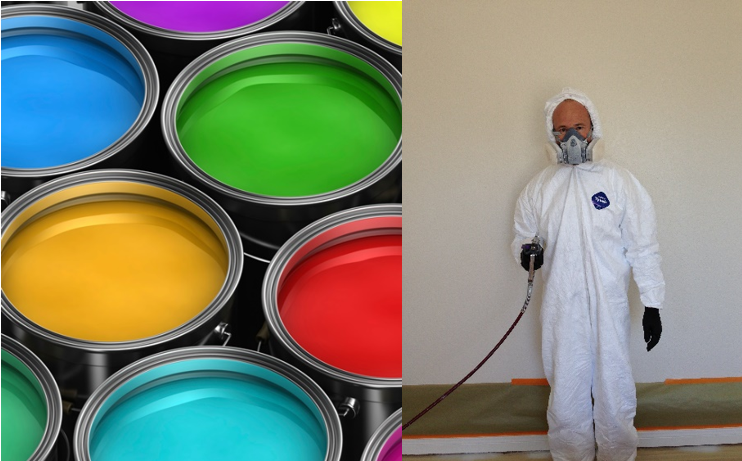
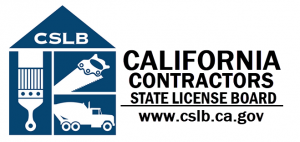
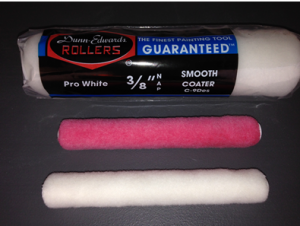 A bag of 3 or 6 budget roller covers from Home Depot are trash. These will leave fuzz and an imbalance of paint on your walls. Insist on a new (not used) paint roller cover from a professional paint supplier (like Dunn Edwards). I’ve used almost every roller on the local market. I can tell you the Dunn Edwards Pro White roller cover is by far the best. It does a very nice job (yes, it costs more) and you can see and feel the difference.
A bag of 3 or 6 budget roller covers from Home Depot are trash. These will leave fuzz and an imbalance of paint on your walls. Insist on a new (not used) paint roller cover from a professional paint supplier (like Dunn Edwards). I’ve used almost every roller on the local market. I can tell you the Dunn Edwards Pro White roller cover is by far the best. It does a very nice job (yes, it costs more) and you can see and feel the difference.